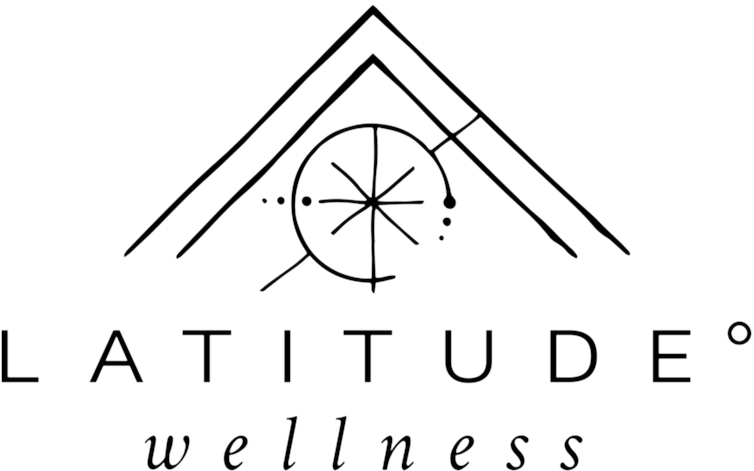Is a Hot Stone Massage a Deep Tissue Massage?
Yes and No – it’s totally up to you!
As with any massage – the pressure is completely individual. If you like firmer pressure, the RMT can use the stones to reach a deeper level in the tissue that may not be within reach with hands alone.
If you like more moderate or light pressure, this treatment style is still for you. The pressure of stones used can be lighter and slower, while the heat from the stones deeply relaxes your body’s nervous system to allow for full body muscular tension relief.
What to expect from therapeutic hot stone treatment?
The therapeutic hot stone treatment is a combination of traditional hot stone (geothermal therapy) and Swedish massage. The stones used are a mix of basalt and marble. The Basalt stones are a type of smooth volcanic rock, perfect for retaining heat throughout treatment, and are heated in a sanitizing water bath. The marble stones are a naturally cool, smooth stone and can be optionally used to offer contrasting geothermal therapy. If you’ve never had a hot stone treatment before, this is truly a deeply relaxing and therapeutic total experience.
During treatment, the stones are both balanced on your body, as well as used in the RMT’s hands to massage with. Stones will be placed on the areas of your body holding the most tension, to offer a static, concentrated heat to allow deep relaxation and relief in the muscles, allowing the tension to melt away. This release then allows the RMT to manually massage the area further using both stones and hands to release any tricky knots or restrictions. Initially, the hot stones are moved more quickly across the skin, allowing time for the body to acclimatize to the heat. As the stones begin to cool slightly; slower, and more specific work can be done.
Is it covered under my insurance?
Yes, if you have coverage for massage therapy, then this style treatment is covered.
While hot stone massage may feel like a lavish spa experience, the treatment is therapeutic in nature and administered by a Registered Massage Therapist. The geothermal therapy of the stones can be compared to to an RMT using a heating pad to achieve decreased tension in a traditional Swedish treatment.
How hot are the stones?
Though it’s called hot stone massage, the stones are actually ‘very warm.’ When the stones are taken out of the sterilizing water bath, they are dipped in a bowl of cold water first and then double-checked by the RMT to ensure a safe temperature. The RMT is holding the stones during the treatment, which again ensures they aren’t too hot, and will always check in with you regarding the temperature and pressure. Some areas of the body may be more sensitive to heat than others, and if this is the case, the stones and be dipped more than once in the cold-water bath for a more moderately warm temperature, or they can be discontinued altogether. Again, this experience is totally up to you.
Benefits of Hot Stone Massage include:
Decreases muscle tension and spasm
Decreases joint stiffness
Increases a deeply sedative full-body relaxation that can help manage the side effects of chronic stress, anxiety, and depression.
Stimulates the circulatory system and increases blood flow
Stimulates the lymphatic system
Decreases muscle and joint pain or discomfort
Fascial Stretch Therapy
Fascia is a type of connective tissue that structurally suspends, supports, and enables all anatomical movement from the skin, muscles, and joints to cells and everything in between. When fascia is restricted by immobility, injury, and lifestyle; it gets compressed, shortens, and space is diminished within joints and the entire body. The restricted fascia often leads to pain, reduced function, and a decreased range of motion, negatively impacting many aspects of your life.
What is Fascial Stretch Therapy?
The best way to describe Fascial Stretch Therapy – Your body receives the benefits of a yoga session while you take a nap!
Fascial Stretch Therapy is performed on a massage table where clients are fully dressed in comfortable athletic wear and the RMT assists the body and limbs through multiple planes with a mix of passive and active ranges of motion. Elastic stabilization straps are used to safely secure the part of the body that is not currently being treated.
The intention of FST is to decompress, lengthen and mobilize restricted fascia, musculature, and joint capsules which may be limiting your flexibility, strength, and performance.
This is a slow and fluid treatment, where the practitioner safely holds and moves your body and limbs, guiding you in pain-free passive movement; while you focus on breathwork and relaxation.
Who would benefit from fascial stretch therapy?
Fascial stretch therapy can benefit folks of all ages and activity levels. FST can help with poor posture from sedentary work environments, rehabilitation from injury due to sports or activities, increasing range of motion and decreasing tension, movement restoration, decreasing stress, and pain reduction.
Is FST covered under my insurance?
Yes, if you have coverage for massage therapy, then this style of treatment is covered. Morgan is a Registered Massage Therapist; she uses a combination of traditional massage and fascial stretch techniques during FST sessions. This is fully within the scope of practice for massage therapists in British Columbia and therefore is billable under massage therapy to your extended health benefits.
Are there risks?
As with any form of assisted stretching or massage therapy, there are some possible risks. The general risk is that you could be slightly sore 24/48 hours following treatment.
Contraindications for Fascial Stretch Therapy include circulatory pathologies such as uncontrolled hypertension, connective tissue disorders, acute infections or injuries, chronic hypermobility, or instability of joints.
If you have any questions about whether FST is safe for you, please contact your primary healthcare provider or doctor prior to treatment.

